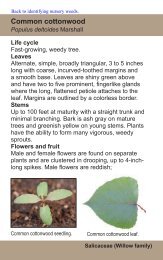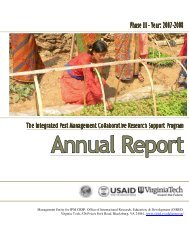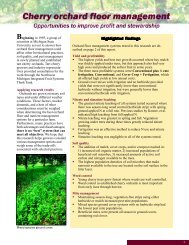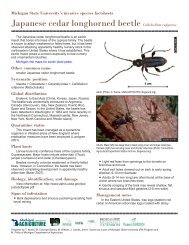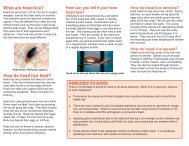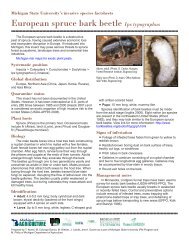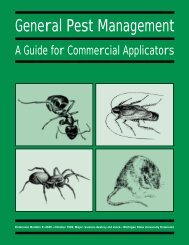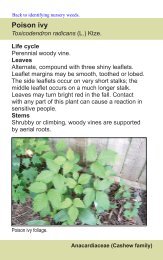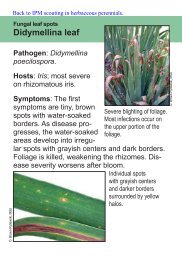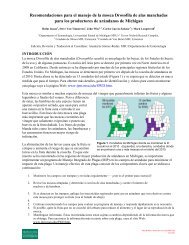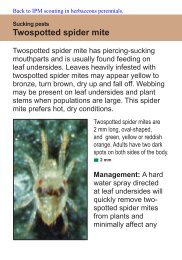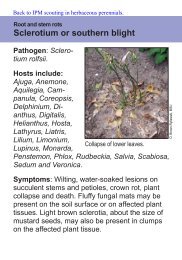Whole Manual - Michigan State University: Integrated Pest ...
Whole Manual - Michigan State University: Integrated Pest ...
Whole Manual - Michigan State University: Integrated Pest ...
Create successful ePaper yourself
Turn your PDF publications into a flip-book with our unique Google optimized e-Paper software.
BACTERIAL SPOT<br />
Bacterial spot can affect the leaf (top) and the fruit (bottom).<br />
Pathogen type: bacterium (Xanthomonas axonopodis pv.<br />
vesicatoria)<br />
Disease symptoms: Small, dark, greasy-looking spots<br />
develop on leaves and stems. On green fruit, small, dark,<br />
raised spots occur and may be surrounded by watersoaked<br />
margins. Spots enlarge up to 1/4 inch in diameter<br />
and are brown and scabby.<br />
Environmental conditions favoring disease: Abundant<br />
rainfall and high humidity are requirements for spread<br />
and infection. Maximum growth of the bacteria is associated<br />
with temperatures between 75 and 86 degrees F. The<br />
bacteria can be carried on the surface of the seed and may<br />
overwinter in the soil in association with roots of nonhosts.<br />
Penetration of plant tissue occurs through wounds<br />
caused by broken plant hairs, insects, and windblown<br />
sand and soil.<br />
Control strategies:<br />
■ Plant disease-free seed and transplants or chemically<br />
treated seed.<br />
■ Practice a three-year crop rotation with nonsusceptible<br />
hosts.<br />
■ Control solanaceous weeds, such as black nightshade.<br />
■ Apply copper-based fungicide.<br />
Vegetable Crop <strong>Pest</strong> Management 77<br />
Chapter 7



